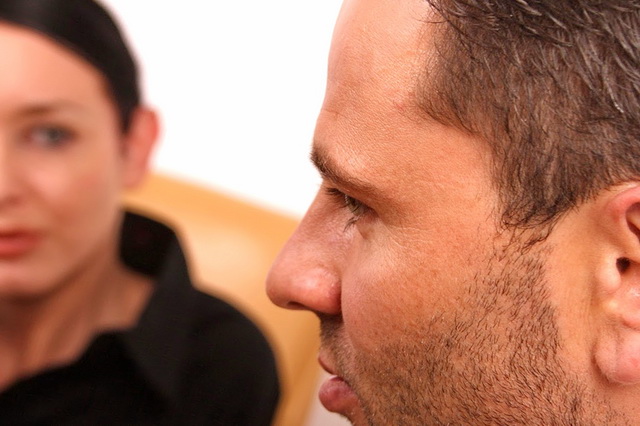I am a strong believer in DBT and use this therapeutic modality quite often. It is certainly less known than Cognitive or Cognitive Behavioral Therapies, so in this article I will take you on the grand tour of DBT. It is quite unusual how DBT came about. Let’s begin there.
Marsha M. Linehan and DBT
Born in Oklahoma than 70 years ago, Marsha lived what must have been a confusing and maybe even a terrifying childhood. Early on she began displaying significant behavioral abnormalities. So much so that eventually her parents hospitalized her in Connecticut for evaluation and treatment.
Indications at the hospital pointed toward her having schizophrenia. While an inpatient Marsha underwent treatments that included ECT, Librium, Thorazine, seclusion, along with other treatments. This was her youth until her discharge at 18.
After discharge Marsha pursued advanced education at Loyola University, earning a Master’s degree in psychology and graduating cum laude. Moving on, she then earned a PhD is psychology. This led to her ongoing work in the area of suicide and related destructive behaviors. As her interest and knowledge grew, she became a researcher and professor of psychology. In later years she reminisced about her diagnosis and feels that she had a Borderline Personality Disorder.
Today, she is an internationally known author, teacher and researcher in the field of psychology. Masha M. Linehan, PhD plays a key leadership role in the psychology and psychiatry departments of the University of Washington. She is best known for her clinical and theoretical development of DBT.
The Roots of DBT
Understanding DBT begins with the concept of the dialectical process. Rooted in antiquity, its presence can be found in Indian (Buddhist) and European philosophies. First noted in Plato’s Socratic dialogues, it is a method of clarifying or discovering the truth in the midst of disagreement between two or more people.
An example of the process can be best observed in a group setting. Imagine a small 5 person therapy group. The focus of this session is Mary. She has a firm hold on the idea that she has no value as a person. As such, there is no reason for her to live. So strong is the hold of this thought that Mary can argue with sophistication, why she should act on it. Why she has no reason to live.
Originally intended to benefit those with self-destructive Borderline Personality Disorder behaviors and chronic suicidal thinking the role of DBT has reached out to a much broader audience. Today’s participants are those with limited abilities to modulate their emotions. Those who are most likely to act impulsively. Participants in DBT are cocooned with individual and group support focusing on treatment, while protecting them from acting on destructive thoughts and impulses.
In order to build and strengthen the bond among members, many DBT treatment centers will re-identify group therapy as community meetings or skill training. Groups are intentionally kept small with a goal being to develop a support system among community members. There is an understood social contract among the members of which the therapist is also a participant.
DBT is an intensive course of action. It requires a high level of trust within the community and the willingness to let others be participants in the unwanted emotional roller-coaster these clients ride.
The Good, the Bad, and the Ugly of DBT
The first thing that needs to be clear is that DBT is not for everyone. It seems to be most effective among those without adequate emotional controls, but is also aware of this deficit. For example, I was interviewing a potential DBT participant. She was in her early 40’s, attractive, articulate, and bright. She knew a great deal about Borderline Personality Disorder and specifically how it affects her life. Much of her life had been spent in treatment for her symptoms. She expressed how tired she was of dealing with the issues brought about by her condition.
It was about midway through our discussion that she stopped giving me a very intense look and asked, “Can you help me with my problem? I am tired of people just blowing me off.” Somewhat taken aback by her candor, I took a moment to process her question then looked at her and responded, “Yes, together we can take action, but there can be no B.S., it will be you, the community, and I am working toward the result you want.”
Later she became an active participant in the community, learning and helping others (including myself) learn from her.
As indicated the role of the clinician in DBT is also different. In most other forms of treatment the role of the therapist is that of a guide, listener, and advisor. DBT challenges the therapist to become more actively involved in the lives of their patients. Their role shifts to that of a facilitator. Tuned into the direction of the dialogue he or she may stop to redefine terms, clarify meanings, or even delve deeper into the dynamic going on.
DBT, different, yes; radical, maybe; effective, for some yes. On the scientific side recent studies and testing has been conducted in an effort to measure the efficacy of DBT. The findings do indicate that the use of DBT does result in an improvement in managing potentially dangerous behaviors. Depending on priorities, the less scientific use of experiential accounts indicate that for those who complete treatment using DBT an even higher rating of success. While more study is needed the DBT approach moves on.








